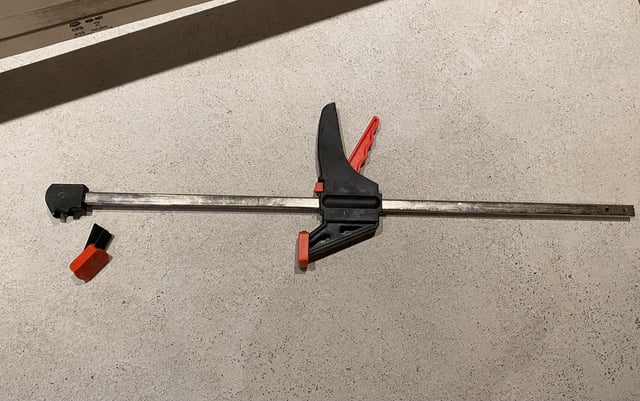Cheap Doesn't Mean Crappy: Smart Shopping Guide

Table of Contents
Understanding Value vs. Price
The key to smart shopping lies in understanding the difference between price and value. A low price doesn't automatically equate to a good deal. Perceived value considers the overall worth you receive in relation to the cost. Simply put, you're looking for the best possible product or service for your budget.
- Consider the product's lifespan and durability: A slightly more expensive item that lasts five years is often cheaper in the long run than a cheaper one that needs replacing annually. Think about the total cost of ownership.
- Factor in repair costs and potential replacements: Will the product require frequent repairs? Consider the cost of these repairs compared to the initial purchase price. A higher upfront cost might mean fewer repair bills down the line.
- Assess the overall quality of materials and craftsmanship: Examine the materials used. High-quality materials generally result in a longer-lasting product. Look for well-constructed items with attention to detail.
- Compare features and benefits across different price points: Don't just focus on the price tag; compare what each product offers. Sometimes, paying a bit more for superior features and functionality is a worthwhile investment.
Mastering the Art of Deal Finding
Finding cheap deals without compromising quality is an art, but it's a skill you can master. There are numerous strategies to uncover hidden savings and maximize your budget.
- Utilize Coupon Websites and Apps: Websites and apps like RetailMeNot, Coupons.com, and Groupon offer a vast array of discount codes and deals. Explore these resources before making any purchase.
- Leverage Price Comparison Websites: Sites like Google Shopping, PriceGrabber, and Bizrate allow you to compare prices from multiple retailers simultaneously, ensuring you get the best possible deal.
- Shop During Sales and Promotions: Take advantage of seasonal sales, Black Friday, Cyber Monday, and other promotional periods. Plan your purchases strategically to coincide with these events.
- Consider Refurbished or Gently Used Items: Buying refurbished or gently used items from reputable sellers (like certified refurbished options from manufacturers) can significantly reduce costs while still providing quality products. However, carefully check the condition and warranty before purchasing.
- Join Loyalty Programs: Many retailers offer loyalty programs with exclusive discounts, rewards points, and early access to sales. Sign up for these programs to maximize your savings.
Smart Shopping Habits to Adopt
Developing smart shopping habits is crucial for long-term financial health and ensuring you consistently make budget-friendly choices without sacrificing quality.
- Create a Budget and Stick to It: A well-defined budget helps you track your spending and ensures you don't overspend on unnecessary items. Allocate specific amounts for different spending categories.
- Make a Shopping List and Prioritize Needs: Avoid impulse purchases by creating a shopping list and sticking to it. Prioritize essential items and delay non-essential purchases.
- Read Reviews Before You Buy: Online reviews provide valuable insights into product quality, durability, and customer satisfaction. Pay attention to both positive and negative feedback.
- Compare Warranty and Return Policies: Understand the warranty and return policies before purchasing. A strong warranty can protect you against defects and malfunctions.
- Avoid Impulse Purchases: Resist the urge to buy items you don't need. Take time to consider your purchase; if you're still unsure after 24 hours, it's likely not a necessary purchase.
Specific Product Categories: Smart Shopping Tips
Applying these smart shopping strategies can yield significant savings across different product categories.
- Electronics: Look for open-box deals or refurbished models from reputable sellers. Often, these items are practically new at a fraction of the cost.
- Clothing: Shop sales, utilize online discount codes, and consider buying off-season for significant price reductions. Check for clearance sections.
- Groceries: Utilize store loyalty programs, compare unit prices, and plan meals strategically to minimize food waste and maximize value. Buy in bulk for items you use frequently.
Conclusion
Finding great deals doesn't mean compromising on quality. By understanding the difference between price and value, mastering deal-finding strategies, and adopting smart shopping habits, you can consistently make affordable, high-value purchases. Remember, cheap doesn't have to mean crappy! Start saving money without compromising quality! Use these smart shopping techniques to find amazing deals and enjoy the benefits of affordable, high-value purchases. Embrace smart shopping and discover that cheap doesn't mean crappy!

Featured Posts
-
 Uber Stocks Resilience Analyzing Its Position During Economic Downturns
May 17, 2025
Uber Stocks Resilience Analyzing Its Position During Economic Downturns
May 17, 2025 -
 Lawrence O Donnell Exposes Trumps Live Tv Humiliation
May 17, 2025
Lawrence O Donnell Exposes Trumps Live Tv Humiliation
May 17, 2025 -
 Tesla Berlin Prosvjed I Optuzbe Za Prijetnju Okolisu
May 17, 2025
Tesla Berlin Prosvjed I Optuzbe Za Prijetnju Okolisu
May 17, 2025 -
 Andor Novel Scrapped Publishers Ai Concerns Explained
May 17, 2025
Andor Novel Scrapped Publishers Ai Concerns Explained
May 17, 2025 -
 Ranking The 10 Best Sherlock Holmes Quotes
May 17, 2025
Ranking The 10 Best Sherlock Holmes Quotes
May 17, 2025
